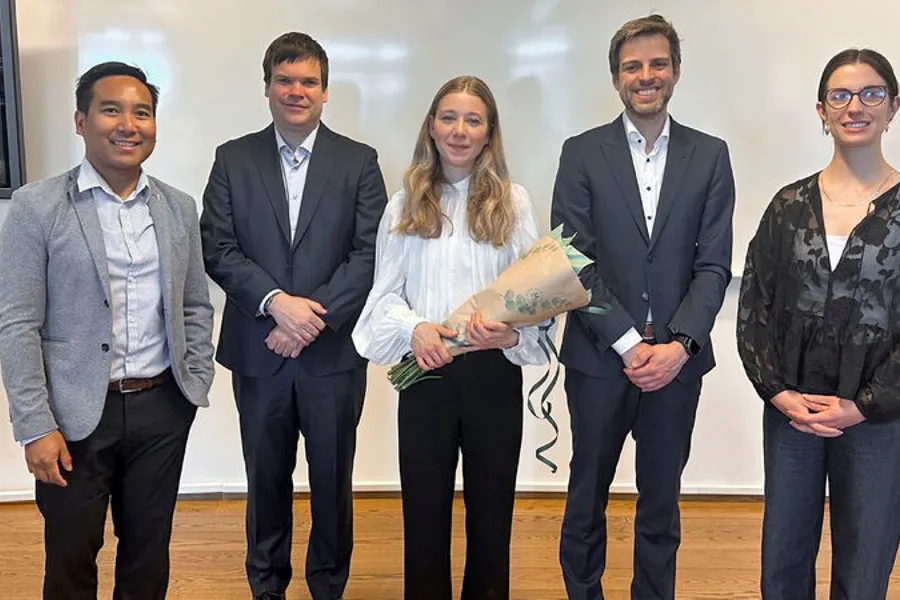Dissertation Julie Uv
On June 3rd 2025, Julie Uv defended her thesis titled "Computational Study of the Fetal ECG" for the degree of Philosophiae Doctor at the Department of Informatics, Faculty of Mathematics and Natural Sciences, University of Oslo (UiO). The trial lecture was titled "Inverse electrocardiography and the generation of patient-specific models".

Photo: Simula
Disputation: Julie Johanne Uv - Institutt for informatikk
Adjudication committee
- First opponent: Senior scientist Matthijs Cluitmans, Maastricht University Medical Center, The Netherlands
- Second opponent: Assistant Professor Karli Gillette, University of Utah, USA
- Third member and chair of the evaluation committee: Associate Professor Håkon Kvale Stensland, University of Oslo, Norway
Chair of the Defence
- Head of Department, Professor Ole Christian Lingjærde, Department of Informatics, University of Oslo
Supervisors
- Senior Research Scientist Hermenegild Arevalo, Simula Research Laboratory, Norway
- Research Scientist Johannes Langguth, Simula Research Laboratory, Norway
- Professor Aslak Tveito, Simula Research Laboratory, Norway
Summary
Monitoring a baby’s heart during pregnancy and labor is vital for detecting issues like fetal hypoxia, growth restriction, or congenital heart disease. While cardiotocography (CTG) is widely used, it has limitations in accuracy. A promising alternative is non-invasive fetal ECG (NI-fECG), which offers more detailed information of the fetal cardiac activity. However, a key challenge is separating fetal signals from maternal ones, prompting the need for better computational methods.
This thesis presents a new computational framework using mono- and bidomain equations to model fetal ECG and study how factors like vernix caseosa (a waxy skin coating), cardiac ischemia, and fetal position affect signal quality and diagnostic markers. Findings show vernix caseosa, fetal ischemia and fetal position can alter markers such as the T/QRS ratio, while time-based features such as QT and QRS intervals stay relatively consistent across different positions.
Overall, the approach provides a foundation for bidomain-based computational models of fetal ECG, as well as a method for evaluating and improving signal processing algorithms, potentially leading to better prenatal care.